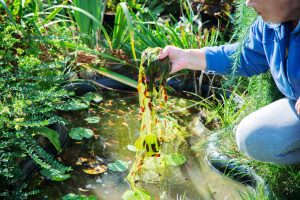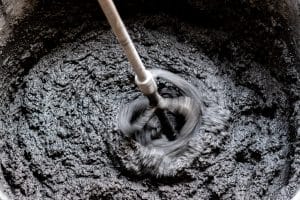
Why a Pond’s pH Level is a Critical Measurement for Healthy Ecosystems
Understanding pH and Its Importance
What is pH?
pH is a measure of the acidity or alkalinity of pond water, ranging from 0 to 14, with 7 being neutral.
pH levels affect the solubility of minerals and the ability of aquatic life to thrive.
Understanding pH is essential for maintaining a healthy pond ecosystem.
Why pH Matters in a Healthy Pond Ecosystem
pH levels impact the health and well-being of aquatic plants and aquatic life.
A balanced pH level is crucial for maintaining a healthy pond ecosystem.
pH levels can affect the solubility of minerals and the ability of aquatic life to thrive.
Factors that Influence the pH of Water
Natural pH Influences
Natural pH influences include interactions with surrounding rock and other materials.
pH can fluctuate with precipitation, especially acid rain.
Photosynthesis, respiration, and decomposition can also impact pH levels.
Man-Made pH Influencers
Man-made pH influencers include wastewater or mining discharges.
pH can be affected by human activities such as fertilization and pesticide use.
pH levels can also be impacted by the introduction of non-native species.
The Role of Carbon Dioxide in pH Fluctuations
Carbon dioxide is the most common cause of acidity in water.
Photosynthesis, respiration, and decomposition all contribute to pH fluctuations due to their influences on CO2 levels.
Carbon dioxide can impact pH levels, especially in ponds with high levels of aquatic plant growth.
The Impact of pH on Pond Ecology
pH and Aquatic Plants
Aquatic plants in ponds rely on a stable pH range, typically between 6.0 and 9.0, to effectively carry out photosynthesis and respiration.
Water that is too acidic or too alkaline can hinder plant nutrient uptake, particularly of nitrogen, phosphorus, and other necessary nutrients.
pH levels can impact the growth and health of aquatic plants.
pH and Aquatic Life
pH levels have a pronounced impact on pond fish health.
Ideal pH levels for most fish species range from 6.5 to 9.0, and deviations from this range can cause stress, weakened immunity, and increased susceptibility to diseases.
pH levels can also impact the health and well-being of other aquatic life, such as amphibians and invertebrates.
Measuring and Testing pH Levels
Understanding Test Kit Results
Mastering the interpretation of test results is crucial for pond owners.
Understanding pH, alkalinity, nitrate-nitrogen levels, and heavy metals is necessary for making informed decisions.
Test kit results can help identify pH-related issues and inform management decisions.
Routine Monitoring and Adjustments
Monitoring: It is critical for the health of koi, goldfish, and other aquatic life that pond owners regularly test the water pH.
Adjustments: To adjust the pond water pH effectively, use a reliable pond water test kit to determine the current pH.
Regular monitoring and adjustments can help maintain a balanced pH level.
Regulating pH in Ponds
Natural pH Buffers
Natural pH buffers in ponds include compounds that help stabilize pH levels, preventing harmful fluctuations.
Limestone, often present in local bedrock or deliberately added, is a common natural buffer, slowly releasing calcium and carbonates into the water.
Natural pH buffers can help maintain a stable pH level.
Chemical Adjustments and Treatments
In some cases, direct intervention is necessary to adjust and stabilize pH.
The addition of lime or baking soda can raise pH levels, while substances like vinegar or alum can lower pH levels.
Chemical adjustments and treatments should be used with caution and under the guidance of a pond management professional.
Maintaining a Balanced pH
Practical Water Quality Management Tips for Pond Owners
Maintaining adequate oxygen levels is critical for supporting aquatic life.
Techniques such as installing aerators or fountains can enhance oxygenation.
Regular water testing and monitoring can help identify pH-related issues.
Addressing pH-related Issues
Acidosis and Alkalosis: If the pond water becomes too acidic or too basic, immediate steps must be taken to adjust the pH.
Plant Growth: Healthy plant growth helps to maintain pH stability in the pond.
Filtration: Proper filtration is crucial to maintaining stable pH levels and overall pond health.
Water Quality Parameters
Nitrate-Nitrogen and Total Phosphorus
Nitrate-nitrogen and total phosphorus are key nutrients for plant growth.
High concentrations can lead to problematic algae blooms.
Regular testing and implementing strategies can improve water quality.
Total Dissolved Solids (TDS)
Monitoring TDS is vital for maintaining optimal water quality.
High levels of TDS can indicate pollution or runoff.
Utilizing water testing kits can help identify sources of contamination.
Alkalinity and Hardness
Alkalinity and hardness are critical components in stabilizing pH levels.
Testing for these parameters and adjusting them as needed is necessary.
Maintaining a stable environment is essential for aquatic life.
Advanced Water Quality Monitoring
Metals and Toxic Substances
The presence of heavy metals and toxic substances can harm pond ecosystems.
Utilizing an electronic pH meter and specific water testing kits can help identify and mitigate risks.
Regular monitoring can help identify potential issues.
Conclusion
Summary of Key Points
pH is a critical parameter in maintaining a healthy pond ecosystem.
pH levels can impact the health and well-being of aquatic plants and aquatic life.
Regular monitoring and adjustments can help maintain a balanced pH level.
Final Thoughts on pH and Pond Ecosystems
Maintaining a balanced pH level is crucial for maintaining a healthy pond ecosystem.
pH levels can impact the solubility of minerals and the ability of aquatic life to thrive.
Regular monitoring and adjustments can help maintain a balanced pH level and ensure a healthy pond ecosystem.



